#Topics for Electronics and Communication Engineering
Explore tagged Tumblr posts
Text
How Electrical Labels Improve Safety and Operational Efficiency
Ever glanced at a tangled mess of wires and wondered how anyone could make sense of it? That’s where electrical labels step in. While they may seem like small, unassuming pieces of plastic or paper, their impact goes far beyond their size. These tiny identifiers do more than just mark wires—they provide order, safety, and efficiency in a world that thrives on structure. So, what’s the big deal…
0 notes
Text
Ok so theres this documentary sisters with transistors abt women in electronic music i watched a couple years ago and at the time i remember thinking it was a bit flawed in its focuses but was still intrigued by what it did depict which was the amount of technological engineering know-how it took to make electronic music in its early years. But also the doc barely touched on wendy carlos whose importance to electronic music is pretty ubiquitous even to the most terminal-indie-folk-listening even slightly-online queer person. And also well sure a doc has to limit its scope but retrospectively it feels actually so egregious to make a documentary about electronic music in general and not even brush the topic of dance music. Which is of course a genre invented and pioneered by black people. With significant contributions by black women of course. And just now i went into the lb reviews for said documentary to make sure i wasnt misremembering the artists it focuses on and every critical review rightfully points out the lack of depth in wendy carlos’ segment. But of the top ~20ish reviews only one mentions how white the doc is. 😑.
I think generally theres a dismissiveness toward dance music as not being serious and some of that is the contemporary association of it with mass-market raveslop edm and some of that is because theres an idea that something cant be designed for as “”vapid”” a type of fun as going to the club and also be seriously artistically crafted and also thats all tied up in racism and classism bc of the specific communities and musical scenes that pioneered those types of music. And which are the communities and scenes that continue to keep these genres fresh like all the best contemporary techno i know is from latin america. Anyway. Thank u to black djs from chicago for house music and thank you to black djs from detroit for techno and thank you to all the women that allowed the music i love to exist that is all
#i love the nerdy engineering weird moog music of the 60s-70s ofc#but to overlook dance music the best most important thing in the world#deeply sinister#this is my retroactive review of sisters with transistors (2020)#<- two years later
8 notes
·
View notes
Text
Proven Marketing Tactics for Small Business Success
Marketing is the lifeblood of any enterprise, especially small groups seeking to grow and compete in a crowded market. Without powerful advertising strategies, even the satisfactory products or services can pass overlooked. Unlike huge companies, small companies often operate with restrained budgets and resources. Therefore, they need clever, price-effective, and measurable strategies to advantage visibility and develop step by step.
Best marketing strategies for small business

This article explores numerous marketing techniques that are especially effective for small agencies, combining traditional strategies with modern digital tools.
1. Understand Your Target Audience
The basis of all advertising begins with know-how your clients. Define your target marketplace based totally on:
Demographics: Age, gender, profits stage, education
Geographics: Where they stay or paintings
Psychographics: Lifestyle, pursuits, and values
Behavioral trends: Buying conduct, logo loyalty, product utilization
Creating a purchaser persona enables you tailor your messaging, offers, and channels greater correctly. For instance, in case you're concentrated on university college students, Instagram and TikTok is probably better platforms than electronic mail advertising or print media.
2. Build a Strong Brand Identity
A recognizable and straightforward emblem builds lengthy-time period customer loyalty. Your brand includes:
Logo and design: Consistent shades, fonts, and imagery
Tone of voice: Formal, informal, funny, and so on.
Even a one-man or woman enterprise blessings from sturdy branding. For example, a nearby baker who uses eco-friendly packaging can emblem themselves as “inexperienced” and attract environmentally-conscious customers.
Three. Create a Professional Website
A internet site is your 24/7 digital storefront. It should be:
Mobile-friendly and fast
Easy to navigate
Linked for your social media pages
Equipped with touch paperwork or chat help
Use platforms like WordPress, Wix, or Shopify to create low priced, attractive websites without requiring technical expertise.
Four. Utilize Local search engine marketing
If you’re a nearby commercial enterprise, optimizing your on-line presence for local searches is critical. Start by using:
Claiming and verifying your Google Business Profile
Encouraging satisfied clients to depart reviews
Using local key phrases (e.G., “nice salon in Patna”)
Getting indexed in neighborhood directories and maps
5. Leverage Social Media Marketing
Social media structures offer unfastened and paid tools to interact your target audience and construct a community.
Facebook & Instagram: Great for promotions, memories, and visible content
LinkedIn: Best for B2B organizations
YouTube: Ideal for tutorials, product demos, and at the back of-the-scenes content
X (previously Twitter): Good for quick updates, client interplay
Use content material calendars to time table posts always and engage with followers through polls, contests, and comments.
6. Content Marketing: Educate and Add Value
Rather than simply promoting, content material advertising goals to teach and construct accept as true with. Examples encompass:
Blog posts: Informative articles in your internet site
E-books & Guides: Offer beneficial records in alternate for electronic mail addresses
Videos: Product demonstrations, testimonials, or storytelling
Infographics: Shareable visuals explaining complicated topics
Content advertising improves search engine marketing, establishes authority, and builds long-term trust.
7. Email Marketing
Email remains one of the most price-powerful channels for small corporations. Use it to:
Send newsletters
Announce promotions or new merchandise
Re-engage inactive customers
Request remarks
Tools like Mailchimp, Sendinblue, and ConvertKit allow smooth automation and list segmentation. Ensure your emails offer fee, no longer just commercials.
Eight. Referral and Loyalty Programs
Your glad clients can be your excellent marketers. Encourage them to refer friends or family with the aid of offering:
Discounts
Free products
Loyalty points
#digital marketing#online and offline sales#online and offline business#method of small business#Best marketing strategies for small business
3 notes
·
View notes
Text
Electrical and Electronics Engineering (EEE) Degree at Solamalai College of Engineering, Top Madurai Engineering College

Technology plays a important role in today's world for shaping our lives, Electrical and Electronics Engineering (EEE) has emerged as one of the most popular fields. Solamalai College of Engineering, one of the best Madurai Engineering College offers a comprehensive EEE degree program that prepares students for a dynamic and fulfilling career in this ever-evolving field. This blog delves into the various aspects of the EEE program at Solamalai College of Engineering, highlighting its curriculum, faculty, facilities, career prospects, and why it stands out among other programs.
EEE Degree Overview
The EEE program is structured to cover fundamental and advanced topics in electrical and electronics engineering. Here's a glimpse of the curriculum:
Core Subjects
Circuit Theory: Understanding the principles of electrical circuits, network theorems, and AC/DC analysis.
Electromagnetic Fields: Studying electromagnetic theory, wave propagation, and antenna principles.
Power Systems: Learning about generation, transmission, and distribution of electrical power, and smart grid technologies.
Control Systems: Exploring feedback systems, stability analysis, and control strategies for various engineering applications.
Analog and Digital Electronics: Gaining insights into semiconductor devices, integrated circuits, microprocessors, and digital logic design.
Communication Systems: Understanding the fundamentals of analog and digital communication, modulation techniques, and signal processing.
Electives
Students can choose from a range of electives to specialize in areas such as renewable energy, robotics, VLSI design, embedded systems, and more. These electives allow students to tailor their education to their interests and career goals.
Career Prospects
A degree in Electrical and Electronics Engineering from Solamalai College of Engineering opens up numerous career opportunities across various industries. Here are some potential career paths:
1. Power and Energy Sector
Graduates can work in power generation, transmission, and distribution companies. They can also contribute to the development of renewable energy solutions, smart grids, and energy management systems.
2. Electronics and Semiconductor Industry
The electronics industry offers roles in design, development, and testing of electronic devices and systems. Graduates can work in companies specializing in consumer electronics, automotive electronics, and semiconductor manufacturing.
3. Telecommunications
Telecommunications companies seek EEE graduates for roles in network planning, communication system design, and signal processing. The growing demand for 5G technology and IoT further expands career opportunities in this field.
4. Research and Development
Graduates with a passion for innovation can pursue careers in research and development. They can work in research institutions, government agencies, or private companies developing new technologies and solutions.
5. Higher Education and Academia
Those inclined towards teaching and research can pursue higher education and academic positions. They can contribute to the academic community by conducting research and mentoring the next generation of engineers.
Why Solamalai College of Engineering Stands Out
1. Holistic Development
At Solamalai College of Engineering, we believe in the holistic development of our students. The EEE program is designed to nurture not only technical skills but also soft skills such as communication, teamwork, and leadership. Students are encouraged to participate in extracurricular activities, clubs, and community service.
2. Industry Connections
We maintain strong connections with various industries, providing students with opportunities for internships, workshops, and industry visits. These experiences give students practical insights and enhance their employability.
3. Focus on Innovation
Innovation is at the core of our educational philosophy. We encourage students to think creatively and develop innovative solutions to real-world problems. Our research initiatives and collaboration with industry partners foster a culture of innovation and entrepreneurship.
4. Global Perspective
Our EEE program incorporates a global perspective, preparing students to thrive in an interconnected world. Courses on global issues, international exchange programs, and collaborations with foreign universities broaden students' horizons.
Conclusion
The Electrical and Electronics Engineering degree at Solamalai College of Engineering offers a unique and enriching educational experience. With its cutting-edge curriculum, experienced faculty, state-of-the-art facilities, and strong industry connections, the program prepares students for a wide range of career paths. Whether you aspire to work in the power sector, electronics industry, telecommunications, research, or academia, this degree equips you with the knowledge and skills to succeed. Join us at Solamalai College of Engineering and embark on a journey of intellectual and personal growth that will shape your future.
#engineering college#engineering college in madurai#college#education#college life#teacher#high school#lesson plan#madurai engineering college#student life
2 notes
·
View notes
Text
The mysterious signal from Proxima Centauri

The search for extraterrestrial intelligence has been a topic of fascination for humanity for decades. The scientific community has recently been captivated by the mysterious signal from Proxima Centauri, our closest stellar neighbor, detected by the Breakthrough Listen project. This intriguing signal has sparked the possibility of life beyond our planet. Proxima Centauri is a red dwarf star located just 4.25 light-years away in the constellation of Centaurus, making it the nearest known star to our sun. Despite its proximity, it remains invisible to the naked eye, adding to the mystery of the cosmos. The star is known to host at least two planets, one of which, a super-Earth, lies within the habitable zone, where conditions could potentially support liquid water and, conceivably, life. This discovery has expanded our understanding of the universe and ignited our imagination.
The signal, named BLC1 (Breakthrough Listen Candidate 1), was first detected in April and May 2019 and reported in December 2020. It appeared as a narrowband transmission at a frequency of 982.002 megahertz, a part of the radio spectrum seldom used by human-made transmitters. Its behavior is truly intriguing; it was only observed when the Parkes radio telescope in Australia was pointed directly at Proxima Centauri, and it vanished when the telescope looked away. The possibility that this signal could be a form of contact from an advanced civilization is both exhilarating and daunting.
The frequency drift of the signal resembled what one would expect from a transmitter on a planet orbiting Proxima Centauri, suggesting a potential 'techno signature '—an engineered signal indicative of extraterrestrial technology. A techno signature is a term used in the search for extraterrestrial intelligence to describe any detectable sign of technology, such as radio waves or other electromagnetic signals, that could indicate the presence of an advanced civilization. However, the excitement was tempered by the high likelihood of human-made interference, a common culprit in such detections. After the initial discovery, the scientific community conducted a rigorous analysis to determine the signal's origin. Despite the allure of an alien broadcast, subsequent investigations have suggested that BLC1 is most likely a result of human technology.
The signal's characteristics, while compelling, ultimately aligned with frequencies used by oscillators commonly found in electronic devices here on Earth, underscoring the complexity of the search for extraterrestrial intelligence. The events following the reception of the signal from Proxima Centauri serve as a reminder of the challenges in the search for extraterrestrial intelligence. They highlight the delicate balance between skepticism and hope, between the mundane and the extraordinary. As we continue to scan the heavens, the quest for contact remains a testament to our enduring curiosity and unyielding desire to answer the timeless question: Are we alone? The search for extraterrestrial intelligence is a complex and challenging process, requiring delicate precision and a keen eye for detail to distinguish between signals from space and those from Earth, such as radio broadcasts, satellite communications, or even microwave ovens, which can interfere with our search for extraterrestrial intelligence.

"As we conclude this fascinating exploration into the signal from Proxima Centauri, it's essential to ponder the broader implications of what preparing for potential extraterrestrial contact means for humanity. The notion that we might not be alone in the universe is a transformative concept that can reshape our understanding of life, existence, and our place in the cosmos. The prospect of open contact with alien civilizations presents various challenges and opportunities. It compels us to consider the readiness of our global society for such a groundbreaking event.
Preparation for this possibility is not just about the scientific and technological advancements required to communicate and interact with extraterrestrial beings. It's also about the philosophical, ethical, and sociological frameworks we must develop to handle the profound questions and changes such contact would bring. Why should we prepare? The answer lies in the inherent curiosity and drive that define us as a species. Throughout history, humans have always looked to the horizon to understand the unknown and discover new frontiers. Preparing for extraterrestrial contact is the next step in this journey, a testament to our enduring quest for knowledge and our unyielding spirit of exploration.
Moreover, the preparation process can yield significant benefits, fostering international collaboration, driving technological innovation, and expanding our scientific knowledge. Whether or not we ever make contact, the efforts we put into this endeavor can help solve pressing issues here on Earth, from climate change to resource scarcity. In the end, the signal from Proxima Centauri, regardless of its origin, serves as a reminder of the vastness of the universe and the potential for wonders beyond our current understanding. It encourages us to look up at the stars with hope and anticipation, ready to embrace the future, whatever it may hold. As we stand on the precipice of discovery, let us move forward with open minds and hearts, prepared for the possibility that one day, we may receive a message from the stars.
This message could change everything. Let's ensure that we are ready to answer the call and enter a new chapter in the grand story of human civilization. The future is unwritten, and the possibilities are infinite."
2 notes
·
View notes
Text
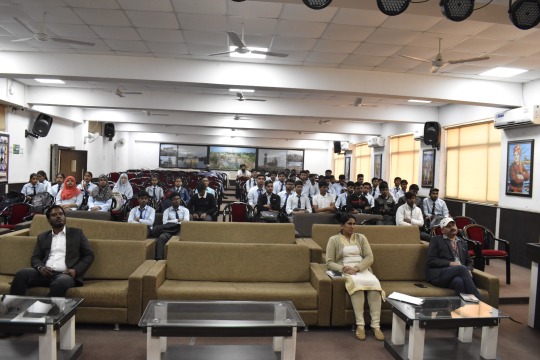


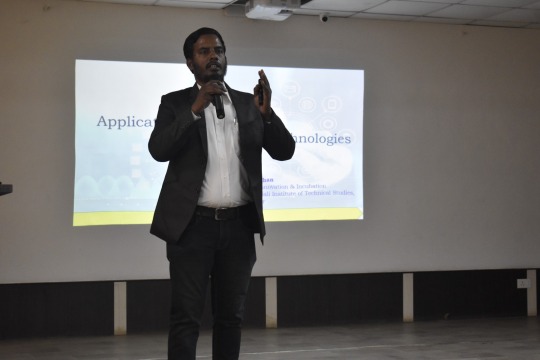
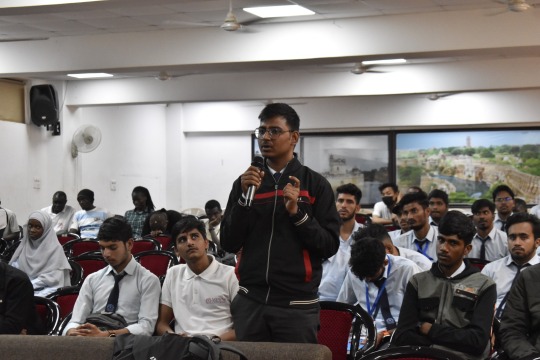

A Guest Lecture on the topic "Application of Digital Technology in Present Era" was delivered by Mr. Latif Khan, Associate Professor, Dept. of Electronics & Communication and in charge of the Incubation Centre at GITS Udaipur. In his lecture, he discussed the recent areas of digital technology. He also presented his ideas which were submitted for different incubation activities. The lecture was coordinated by the Dept, of Physics and Mewar Incubation Centre.
#MewarUniversity #MewarIncubationCentre #Engineering #ElectronicsandCommunication #GuestLecture #Physics #DigitalTechnology #TopUniversityInRajasthan #CUET #NaacAccreditedUniversity #CUET2024 #CUETAdmission #BestUniversityInRajasthan
#educationforexcellence#alumni#placement#alumniassociation#knowledgetowisdom#celebrate#education#mechanicalengineering#mewaruniversity#culture
2 notes
·
View notes
Text
Revving Up Your Career: Automotive Embedded Systems Course
At Technoscripts, our Automotive Embedded System Course is meticulously crafted to provide participants with a comprehensive understanding of the intricate technologies that power modern vehicles. Covering a diverse array of topics including electronic control units (ECUs), vehicle communication networks, automotive protocols, and real-time operating systems, our course equips individuals with the skills and knowledge necessary to design, develop, and troubleshoot embedded systems tailored for automotive applications.
Led by seasoned industry professionals with years of practical experience, our course combines theoretical learning with hands-on practical exercises. Participants have the opportunity to engage in real-world automotive projects, gaining invaluable experience and confidence in their abilities. Our instructors provide personalized guidance and support, ensuring that each participant receives the attention they need to succeed.
Whether you're an aspiring automotive engineer or a seasoned professional seeking to enhance your skills, our Automotive Embedded System Course at Technoscripts offers the perfect platform to advance your career and excel in this dynamic industry. Join us and embark on a transformative journey towards becoming a proficient automotive embedded systems expert.

#automotiveembeddedsystemscourse#automotiveembeddedinstitute#automotiveembeddedtestingcourse#automotiveembeddedcourse#marketing#python#linux#accounting#automotiveembeddedclasses#machine learning
2 notes
·
View notes
Text
Unlocking Knowledge: Top Engaging Educational Resources for Successful Home-Based Learning

Certainly! Successful home-based learning requires access to engaging educational resources that cater to various learning styles and subjects. Here's a list of top resources across different categories:
1. Online Learning Platforms:
a. Khan Academy: Provides free online courses, lessons, and practice in various subjects.
b. Coursera: Offers courses from universities and colleges around the world on a wide range of topics.
c. edX: Similar to Coursera, with courses from universities and institutions globally.
2. Interactive Learning Websites:
a. Code.org: Teaches coding and computer science in an interactive and engaging way.
b. Duolingo: A fun and gamified platform for learning languages.
c. BBC Bitesize: Offers resources for various subjects, especially useful for UK curriculum.
3. Virtual Museums and Tours:
a. Google Arts & Culture: Virtual tours of museums and historical sites worldwide.
b. Smithsonian Learning Lab: Educational resources and virtual tours from the Smithsonian Institution.
4. Educational YouTube Channels:
a. CrashCourse: Quick, entertaining lessons on various subjects.
b. TED-Ed: Engaging lessons worth sharing on a variety of topics.
c. National Geographic Kids: Educational videos about science, nature, and more.
5. Reading and Literature:
a. Project Gutenberg: Offers over 60,000 free eBooks, including many classic literary works.
b. CommonLit: Provides free reading passages and literacy resources for grades 3-12.
6. Mathematics Resources:
a. IXL: Adaptive learning platform for math, language arts, science, and social studies.
b. Wolfram Alpha: A computational search engine that helps with mathematics and other subjects.
7. Science and STEM:
a. NASA's STEM Engagement: Educational resources and activities related to space and science.
b. Mystery Science: Free science lessons with hands-on activities.
8. Coding and Computer Science:
a. Scratch: A block-based visual programming language designed for kids.
b. Codecademy: Interactive coding lessons for various programming languages.
9. Homeschooling Resources:
a. Homeschool.com: Offers a variety of resources, curriculum reviews, and support.
b. Time4Learning: Online curriculum for preK-12th grade.
10. Educational Games:
a. Prodigy: A math platform that uses gamification to make learning fun.
b. ABCmouse: Early learning academy for ages 2-8 with a variety of educational games.
11. Art and Creativity:
a. Art for Kids Hub: Provides art lessons for kids on drawing and crafting.
b. TinkerCAD: An online platform for 3D design, electronics, and coding.
12. Podcasts for Learning:
a. Brains On!: Science podcast for kids and curious adults.
b. Stuff You Should Know: Explores a wide range of interesting topics for older learners.
13. Educational Apps:
a. Quizlet: Flashcards and study tools for a variety of subjects.
b. Anki: A powerful flashcard app for learning and memorization.
14. Virtual Learning Communities:
a. Outschool: Offers live online classes for a variety of subjects and age groups.
b. Scholastic Learn at Home: Day-by-day projects to keep kids reading, thinking, and growing.
Remember to tailor these resources based on the age and interests of the learner. Additionally, maintaining a balance between screen time and hands-on activities is crucial for a well-rounded learning experience.
READ FOR MORE DEFFERENT CATEGORIES SO PLEASE CLICK HERE & VISIT OUR MAIN WEB PORTAL OR CLICK HERE & VISIT OUR SUB WEB PORTAL
#Babylistwelcomebox#Educationalresources#freehomeschoolcurriculumforautism#freelessonplans#homeschoolresources#homeschoolwebsites#lessonplan
3 notes
·
View notes
Text
STEM
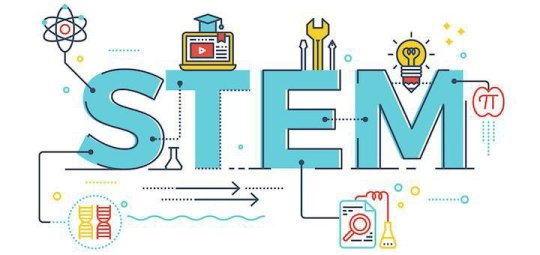
What is STEM?
The STEM (Science, Technology, Engineering, and Mathematics) is one of the four strands available for senior high school in the Philippines. STEM is a two year program that is used in senior high school (Grade 11 and 12). It is a specific educational path that aims to prepare students for future professions in these sectors. It strives to provide students with the abilities, information, and expertise required to succeed in fields related to science and technology. The STEM strand is also available in other country like, Australia, China, France, South Korea, Taiwan, and the United Kingdom. STEM graduates in the Philippines have numerous employment options. Engineering, information technology, science, mathematics, and research are among the most in-demand occupations for STEM graduates. These disciplines provide excellent career possibilities, competitive pay, and opportunities for professional development and progress.
Here Are Some Courses You Can Take If You Took STEM Strand
Science

If you wish to work in the medical area, the next step is to take a scientific course. From health and wellbeing to research and development, medical professionals play an important role in science.
Here are some science courses to consider:
BS Nursing
BS Medical Technology
BS Pharmacy
BS Food Technology
BS Environmental Science
BS Chemistry
Information and Communications Technology

Consider taking an information and communications technology (ICT) course if you enjoyed your coding lessons in high school. Among the topics covered are programming, data analytics, and web development.
Here are some ICT courses you can choose from:
BS Entertainment and Media Computing
BS Information Science
BS Data Science
BS ESports
BS Information Technology
Engineering

If you enjoy problem solving, an engineering course might be right for you. An engineering course will help you to expand your knowledge and skills in these areas. In a nutshell, you'll learn how to build structures and processes that improve people's lives. If the challenge of creativity appeals to you, engineering is the path to choose.
Here are some engineering courses you can choose from:
BS Materials Engineering
BS Electronics and Communications Engineering
BS Chemical Engineering
BS Mechanical Engineering
BS Geodetic Engineering
Mathematics
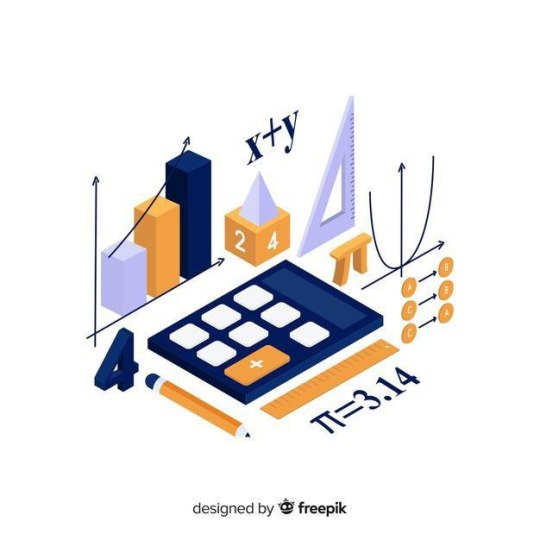
Mathematics courses teach pupils advanced numerical and analytical skills. They cover the fundamentals of mathematics such as algebra, geometry, logic, abstract thinking, and others. In brief, everything you need to know about mathematical computing and modeling. A degree in mathematics will undoubtedly feed your passion of numbers. Math skills can be employed in a variety of industries, from finance to research. There are mathematics courses that can lead to a teaching career as well.
Here are some mathematics courses you can choose from:
BS Applied Mathematics
BS Mathematics
BS Statistics
BS Secondary Education (major in Mathematics)
Sources:
2 notes
·
View notes
Text
Online Automotive Embedded Systems Course — Technoscripts
Cars are no longer just driven by engines & gears, they’re driven by code. From automatic braking to digital displays & smart lighting, almost every modern vehicle function runs on embedded systems. These systems have become a critical part of vehicle design, & their presence is growing as the industry shifts toward intelligent & electric mobility.
For students & professionals aiming to work in the automotive electronics field, Technoscripts offers a structured Online Automotive Embedded Systems Course. The program is designed to build skills that are practical, current, & aligned with industry expectations.
Role of Embedded Systems in Automobiles
At the heart of a car’s brain lies a network of microcontrollers, sensors, & control units that manage everything from engine behavior to in-cabin experience. These embedded systems are built to carry out very specific operations & they must do so quickly & reliably.
They’re found in systems like airbags, anti-lock braking, lighting modules, fuel injection, & even electric window controls. Since these systems must operate in real-time, with zero delay or failure, the demand for trained engineers in this area is constantly rising.
Why Learn This Now?
With major automobile brands racing toward automation, connected vehicles, & electric drive systems, the need for professionals with embedded expertise is higher than ever. Engineers who can understand, program, & test these advanced systems are in demand across R&D departments, production lines, & diagnostics teams.
Learning how these technologies work & how to build them gives candidates a powerful advantage in the job market.
Course Details
This online program offers a blend of essential theory & real-world applications. The syllabus is placed to help learners move from beginner-level understanding to intermediate-level execution.
Topics include:
Core concepts of embedded systems
Communication protocols that are used in vehicles
Understanding & designing ECUs (Electronic Control Units)
H&s-on programming with controllers such as PIC & ARM Cortex
Embedded C coding for automotive systems
Real-time operating system (RTOS) fundamentals for Automotive
Introduction to diagnostics & protocols like UDS
Simulated & real-world project work
Every topic includes both conceptual explanation & related practice-based tasks.
Learning Format
The Training course is conducted in online mode completely. Sessions are delivered by instructors with real experience in embedded automotive systems. Live interaction, access to recorded content, & regular doubt-clearing sessions are all inclusive of the training course features. This setup allows working professionals & students to attend without affecting their daily schedules, while also supporting full-time learners.
Who Can Apply
This program is suited for:
Engineering & diploma students from electronics, electrical, or instrumentation backgrounds
Fresh graduates looking to start a technical career in automotive or embedded roles
Industry professionals interested in reskilling or switching to embedded development
No prior experience with embedded systems is required — the course starts from scratch & builds up in complexity gradually.
Benefits After Completion
After finishing the course, learners will:
Be able to write, test, & troubleshoot embedded programs for automotive systems
Understand how different components communicate within a vehicle
Have real project experience to showcase in interviews
Get support for job applications & placement from the Technoscripts team
Certification & internship letters are provided to successful participants, making their profiles more credible for recruiters.
Why Choose Technoscripts?
Updated curriculum with automotive industry relevance
Faculty with hands-on domain expertise
Real project-based learning approach
Doubt support & mentorship throughout the course
Placement assistance for eligible students
Enroll Today
The automotive world is changing fast & the skills needed are changing with it. If you’re ready to take the next step into embedded systems, the Online Automotive Embedded Course by Technoscripts is the ideal place to start.
Contact us now to know the next batch dates & take your first step toward a specialized career in automotive electronics.
0 notes
Text
How to Choose a PhD Research Domains in EEE, ECE & CSE?

Are you planning to pursue your PhD but confused about which research area to plan. It is EEE (Electrical and Electronics Engineering), ECE (Electronics and Communication Engineering) or CSE (Computer Science Engineering)? This question arises before every student who has just completed his master's degree. Choosing the PhD Research Domains should be one of the most important decisions in an academic and professional life. At Takeoff Projects, we know just how hard this step can be. So, for your convenience we at Takeoff Projects have kept a very simple guide to help you make the right choice.
Step 1: Get to Know Your Interest:
Ask yourself what really does interest you the most? Maybe it's circuits and power systems (EEE), communication technologies (ECE) or coding and algorithms (CSE)? Your research will take some years to finish, so be sure to choose a topic that really excites you.
Step 2: Trends Explore technologies and research topics that are trending:
EEE: Smart grid, renewable energy, electric vehicles, power electronics, IoT in power systems
ECE: 5G/6G communication, embedded systems, signal processing, VLSI design, wireless sensor networks
CSE: Artificial Intelligence, Machine Learning, Cybersecurity, Data Science, Cloud Computing
At Takeoff Projects, we work alongside these domains and can give you advice toward topics that stand true currently and in the future.
Step 3: Verify the Resources and Mentoring:
In order to conduct research successfully the right tools, labs and mentors are needed. The domain must be selected in which sufficient study material, datasets and expert mentorship can be found. If you ever find yourself struggling during your PhD, a strong support system will help you through it.
Step 4: Think About Career Aspirations:
What do you want to do immediately following your PhD?
Is teaching at university on your mind? Or maybe you want to work in R & D or start your own tech company? Work in a domain that is settled to your long-term goals: thus, there is very high demand for AI and Data Science in both fields of Academia and Industry.
Step 5: Talk to Supporter:
Speak with professors, research scholars or industry professionals before making any final decisions. Their experiences can help you in clarify about a few pros and cons of each research domain. You can also contact Takeoff Projects for free consultation we have helped thousands of scholars in selecting and completing their research successfully.
Conclusion:
Not an easy task to discuss the right PhD Research Domains is but along with interest, guidance and goals one can find the best suit for the future. Good opportunities exist in the field of EEE, ECE or CSE. At Takeoff Projects we stand with you at every stage of your research journey. Let your passion guide you and together, we can take your PhD to greater heights!
1 note
·
View note
Text
Importance of Software-Defined Wide-Area Networks
Software-Defined Wide-Area Networks provides organizations with greater agility, flexibility, and control over their network infrastructure
Software-Defined Wide-Area Networks (SD-WAN) is a technology that enables the management and operation of wide-area networks (WANs) using software-based approaches rather than relying on traditional hardware-centric methods. SD-WAN provides organizations with greater agility, flexibility, and control over their network infrastructure. Traditionally, wide-area networks (WANs) were built using…

View On WordPress
#Biggest Security concerns#Electronics and Communication Engineering Topics#Wireless Communication Technology
0 notes
Text
ECE Full Form, Course Details, Admission and Eligibility: A Complete Guide
Engineering continues to be a top choice for students after completing their higher secondary education. Among the many specializations offered, ECE is one of the most popular and versatile fields. In this blog, we’ll explore the ECE full form, course details, career scope, and how to get admitted into top institutions like Karpagam College of Engineering.
What is the ECE Full Form in Engineering?
The ECE full form is Electronics and Communication Engineering. It is a core branch of engineering that deals with the design, development, and application of electronic devices and communication systems. ECE combines aspects of electrical engineering and computer science, making it a highly dynamic and in-demand field in today’s digital world.
The ECE course provides students with in-depth knowledge about electronic circuits, communication protocols, signal processing, embedded systems, and wireless technologies.
ECE Course Overview
The ECE course is a four-year undergraduate program (Bachelor of Engineering or Bachelor of Technology) spread across eight semesters. It includes a blend of theoretical concepts, practical training, laboratory sessions, and real-time projects.
Key Subjects Covered in ECE:
Analog and Digital Electronics
Signals and Systems
Microprocessors and Microcontrollers
Digital Signal Processing
Communication Systems (Analog & Digital)
VLSI Design
Embedded Systems
Wireless Communication
Antenna and Wave Propagation
Internet of Things (IoT) and Machine Learning (Advanced topics)
Students also undergo internships and participate in projects that expose them to real-world applications, preparing them for careers in core and IT sectors.
Career Opportunities after ECE
Graduates of the ECE course have a wide range of career options in both government and private sectors. With electronics being the backbone of today’s technology and communication driving every industry, ECE professionals are always in demand.
Popular Job Roles for ECE Graduates:
Electronics Design Engineer
Communication Engineer
Embedded Systems Developer
Network Planning Engineer
Signal Processing Analyst
VLSI Engineer
IoT Developer
Telecom Engineer
Software Developer (due to coding skills gained during the course)
Additionally, ECE graduates can explore opportunities in PSUs (like BEL, BHEL, ISRO, DRDO), pursue higher studies (M.Tech, MBA), or even move into research and teaching.
Admission Process for ECE Course
Admission into the ECE course in most Indian colleges is based on entrance exams. However, specific procedures may vary depending on the institution and state.
Common Admission Pathways:
National-Level Entrance Exams: JEE Main is accepted by many top engineering colleges across India.
State-Level Entrance Exams: Some states conduct their own exams like TNEA (Tamil Nadu), KCET (Karnataka), etc.
Management Quota / Direct Admission: Some private colleges offer direct admission based on Class 12 marks.
Students must ensure they meet the eligibility criteria before applying.
Eligibility Criteria for ECE
To get admission into an ECE course, candidates generally need to fulfill the following criteria:
Educational Qualification: Must have completed 10+2 (Higher Secondary) or equivalent with Physics, Chemistry, and Mathematics as compulsory subjects.
Minimum Marks: Most colleges require a minimum of 50% aggregate in PCM (relaxation for reserved categories may apply).
Age Limit: There is usually no upper age limit, but candidates should meet the age criteria set by entrance examination authorities.
Why Choose Karpagam College of Engineering for ECE?
Located in Coimbatore, Karpagam College of Engineering (KCE) is a premier institution offering high-quality engineering education, including a comprehensive ECE course.
Highlights of ECE at Karpagam College of Engineering:
Industry-Relevant Curriculum: Updated regularly to include the latest technologies such as IoT, AI, and 5G.
Experienced Faculty: A team of qualified professors and researchers with industry expertise.
Advanced Laboratories: Well-equipped labs for electronics, embedded systems, and communication projects.
Placement Opportunities: Strong campus recruitment from top companies like TCS, Infosys, Wipro, Cognizant, and core companies.
Research and Innovation: Active involvement in research projects, paper presentations, and national-level competitions.
Karpagam College not only focuses on academic excellence but also prepares students for the practical challenges of the tech world.
Conclusion
To sum up, the ECE full form is Electronics and Communication Engineering—a powerful and future-ready branch of engineering. It opens up numerous career opportunities in electronics, IT, telecom, and automation sectors. By choosing a reputed institution like Karpagam College of Engineering, students can ensure a solid academic foundation, industry exposure, and career growth in the evolving world of technology.
Website:https://kce.ac.in/
Address:Myleripalayam Village, Othakkal Mandapam Post, Coimbatore - 641032, Tamilnadu, India
+91 82203 33750, +91 82203 33620 +91 422 2619005, +91 422 2619006
Mail id :[email protected]
0 notes
Text
Career Prospects in ECE in Hyderabad and How HITAM Prepares Students for Success

Electronics and Communication Engineering (ECE) is a dynamic and evolving branch of engineering that plays a crucial role in today’s technology-driven world. With the expansion of communication networks, the Internet of Things (IoT), embedded systems, and smart devices, the field of ECE has become a highly sought-after domain among students and industries alike. If you’re based in Hyderabad or looking to pursue ECE in this region, you're in a hotspot of academic excellence and thriving tech industries.
Let’s explore the scope of Electronics and Communication Engineering in Hyderabad, what you should look for in a college, and how HITAM (Hyderabad Institute of Technology and Management) stands out in equipping students with the skills and knowledge to thrive in this field.
Why Choose Electronics and Communication Engineering?
ECE is a broad and versatile field that combines two major domains: electronics (hardware) and communication (including networks and signal processing). It deals with the design, development, and application of devices, circuits, and communication equipment such as transmitters, receivers, and integrated circuits.
Some key areas of ECE include:
- Embedded Systems
- VLSI Design
- IoT and Robotics
- Signal Processing
- Wireless Communication
- Satellite and Optical Communication
- Networking and Cybersecurity
This diversity means ECE graduates can venture into core industries, IT sectors, research roles, and even managerial or entrepreneurial paths.
ECE in Hyderabad: A Thriving Opportunity
Hyderabad is a leading hub for IT and electronics in India. With the presence of tech giants such as Microsoft, Qualcomm, Intel, and numerous research organizations, there is a consistent demand for skilled ECE professionals. Add to that the city’s robust infrastructure, start-up ecosystem, and academic excellence, and you’ve got a great environment for growth.
The top advantages of pursuing Electronics and Communication Engineering in Hyderabad include the following:
1) Proximity to leading industries: Students have the chance to intern, train, and work with companies in both core electronics and IT services.
2) Academic collaborations: Reputed institutions in Hyderabad have collaborations with research bodies and industries that enhance the relevance of their curriculum.
3) Startup and innovation culture: T-Hub and other innovation centers in Hyderabad promote entrepreneurship, which is ideal for ECE students inclined toward innovation.
4) Access to Research: ECE students can participate in advanced research on topics like wireless networks, nanotechnology, and IoT through institutional programs.
How HITAM Stands Out in ECE Education
The Hyderabad Institute of Technology and Management (HITAM) offers a comprehensive B.Tech program in Electronics and Communication Engineering designed to prepare students for real-world challenges.
1) Industry-Aligned Curriculum: HITAM’s curriculum goes beyond textbooks. It integrates practical knowledge through project-based learning, industry case studies, and workshops. Subjects are updated based on the evolving trends in AI, IoT, embedded systems, and 5G communication.
2) Strong Focus on Innovation and Research: HITAM encourages students to take up interdisciplinary projects from early semesters. Their innovation centers and labs are equipped to support research in VLSI, communication systems, and signal processing.
3) Skill Development Programs: The institution partners with industry leaders for certification programs and technical training. This helps bridge the gap between theoretical learning and practical application, making HITAM students job-ready.
4) Experienced Faculty: The ECE department at HITAM has a team of dedicated and highly qualified faculty members who mentor students academically and professionally.
5) Entrepreneurship and Leadership: HITAM supports entrepreneurial initiatives among students through innovation cells and startup incubation support. The institution promotes a mindset of leadership and innovation.
6) Placement Opportunities: HITAM boasts a strong placement record with reputed recruiters from core sectors, IT companies, and public sector undertakings. Their training and placement cell regularly conducts soft skills training sessions, coding workshops, and mock interviews.
Career Opportunities After ECE from HITAM
Graduates from HITAM’s ECE program have multiple career paths:
Core Electronics Jobs: Circuit design, embedded systems, PCB design, control systems
Communication and Networking: RF engineering, network administration, telecom services
IT and Software: Software development, data science, machine learning
Government and PSUs: Indian Engineering Services (IES), DRDO, ISRO, BHEL, BEL
Higher Studies & Research: M.Tech/MS in India or abroad, Ph.D. opportunities
Entrepreneurship: Developing tech startups in IoT, robotics, or automation
Conclusion
Choosing Electronics and Communication Engineering in Hyderabad is a wise decision, given the city’s robust technological ecosystem and excellent educational infrastructure. Among the top institutes, HITAM stands out for its focus on innovation, industry integration, and holistic student development.
Whether you're passionate about building next-generation communication systems, diving into embedded technologies, or leading tech innovations, ECE at HITAM provides the platform you need to achieve your goals.
If you're exploring engineering options and want a future-ready, hands-on education in Electrical and Computer Engineering (ECE), HITAM is a worthy consideration.
Feel free to ask more if you'd like a breakdown of the course structure or student testimonials from HITAM’s ECE department.
0 notes
Text
https://eeeatoz.com is dedicated to the teaching and sharing of all things related to electrical and electronics engineering. Our website is dedicated to providing comprehensive insights, tutorials, and resources that cover a broad range of topics in the ever-evolving field of EEE. Whether you're a student, professional, or enthusiast, you'll find valuable content to help you understand and master key concepts in electrical systems, circuit design, power generation, control systems, electronics, communication systems, and more.
1 note
·
View note
Text
Price: [price_with_discount] (as of [price_update_date] - Details) [ad_1] This book is crafted for serious aspirants aiming to crack GATE, PSUs, ESE, and other top-tier engineering exams. Designed to offer 360° preparation, it blends concept clarity with smart practice to boost your score and confidence. What’s Inside:Chapter-Wise MCQs with Complete Coverage- Tackle the entire syllabus with topic-wise multiple-choice questions that sharpen your problem-solving skills and reinforce core concepts.3 Full-Length Mock Tests- Experience the real exam vibe! These mock tests simulate the actual GATE pattern to help you master time management and identify weak spots before the big day.Solved GATE 2025 Paper- Get hands-on with the latest GATE paper, fully solved to help you analyze trends and understand the examiner's mindset.MSQ Question Bank for Targeted Practice- Sharpen your skills with a dedicated set of MSQs designed to mirror real GATE exam patterns — ideal for mastering tricky concepts and boosting accuracy. Perfect for GATE, PSUs, ESE & More- Whether you’re targeting GATE or other prestigious technical exams, this book is your go-to practice companion. Practice smart. Stay ahead. Crack the exam with confidence. From the brand CS, Data Science and AI Architecture & Planning Civil Engineering Electrical Engineering Mechanical Engineering Electronics & Communication Publisher : GKP (12 May 2025); GK Publications Ltd Paperback : 524 pages
ISBN-10 : 9369146806 ISBN-13 : 978-9369146802 Item Weight : 890 g Dimensions : 27.9 x 21.6 x 2 cm Country of Origin : India Importer : GK Publications Ltd Packer : GK Publications Ltd Generic Name : Books [ad_2]
0 notes